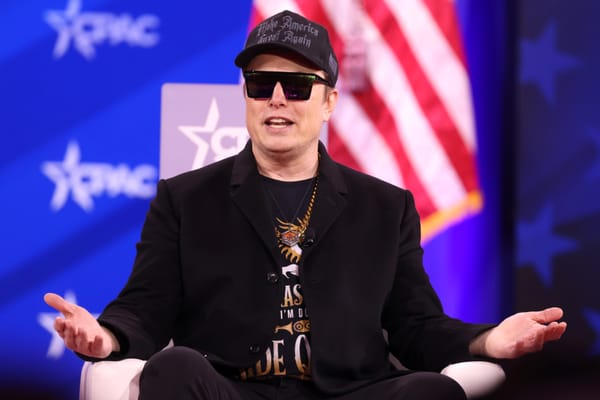In a column published shortly after Donald Trump’s inauguration in January, Compact’s editor-at-large Gregory Conti characterized the newfound alliance between MAGA populists and Big Tech oligarchs as an “anti-clerical coalition.” In the terms of the ancien régime, Conti explained, the Trump camp could be viewed as a united front of the second (nobility) and third (commoners) estates against the first—the clerisy made up of “the professional-managerial class and the HR departments, the professors and nonprofit workers, the press and ‘public-interest’ lawyers, and the regulatory apparatus.”
As Conti noted, “whether and how an anti-clerical coalition can hold will be the great question of the Trump era.” The break-up between Trump and Elon Musk this week is the most visible rupture in it so far. It is a predictable collision between two mercurial men who feed off public drama, but it has larger implications. Musk is the world’s most high-profile futurist, so his split with MAGA jeopardizes its claim on the future.
The political allegiance of big tech matters not just because it encompasses most of the world’s most highly valued companies, but because it is where what is left of the Promethean vocation of bourgeois entrepreneurship resides today. The industry’s guiding spirit, more than that of any other sector, recalls Marx’s famous description: “The bourgeoisie cannot exist without constantly revolutionizing the instruments of production, and thereby the relations of production, and with them the whole relations of society.” (Just replace “revolutionize” with “disrupt.”)
This is the way Musk, Jeff Bezos, Mark Zuckerberg, and the other grandees who assembled on the inaugural dais in January differ from the old second estate. Their position depends not on inherited status but, on the contrary, on their embodiment of the American creed of infinite possibility. Here they found an initial point of symbolic convergence with Trump, whose career has also trafficked in aspirational entrepreneurialism, albeit of a slightly earlier vintage.
Whereas MAGA was at first defined by nostalgia and loss, its alliance with the “Tech Right” allowed it to define itself as the party of the future as well as the past—and thus to fill out and specify the “again” part of the motto, as when Trump promised America would “pursue our manifest destiny into the stars,” endorsing Musk’s interstellar vision. Their alliance is thus also one between the past and the future, against the present, seen as a sterile interregnum presided over by a senile leaders and sclerotic bureaucrats.
“Like many in tech, he truly believes his own hype.”
The proximate cause of the current schism is the “big, beautiful bill,” which resembles not a grand plan for the future but politics as usual. Ever since the 1980s, America has run vast fiscal deficits so as to have it both ways: to keep enough of a pared-back (but also heavily privatized and inefficient) Great Society safety net intact to avoid social collapse, while also staying true to the tax-cutting spirit of the Reagan Revolution. The fact that Musk was surprised by the persistence of this arrangement points to a difference between him and his more pragmatic ex-friend in the White House: Like many in tech, he truly believes his own hype.
The problem with Silicon Valley drinking its own kool aid is that, beneath the gargantuan market caps, many of its highest-profile players remain unprofitable, while others have achieved profitability through forms of rentierism (such as Amazon Web Services) as well as heavy reliance on government contracts and subsidies that conflict with the industry’s ethos of rugged entrepreneurialism. The ongoing push from various Big Tech figures to deregulate cryptocurrencies and online payment platforms suggests that they regard the most promising frontier of profitability not in world-transforming technologies, but in new forms of financial speculation.
In other words, Silicon Valley may see itself as the engine of American growth, but it’s been running on fumes for some time. The tech gold rush of the 2010s was downstream from the Fed’s zero interest rate policy. The current AI boom looks set to go bust sooner or later, especially if more DeepSeek-style humiliations materialize—as seems likely, given the spectacular advances of China’s tech sector.
The MAGA anti-clerical coalition formed because leading figures in tech convinced themselves that what was getting in the way of their futurist dreams were the combined machinations of woke middle managers, antitrust regulators, tech journalists, and other hostile elements of the clerical caste. But with all those forces in retreat, it remains unlikely the industry will rediscover enough dynamism to deliver on its promises. Its leaders, ever unwilling to face the contradictions of their own position, will instead seek other scapegoats.
Figures like Richard Hanania, now a repentant Trump voter, are eagerly offering up just that. In an open letter to Musk published on X amid the feud with Trump, Hanania pleaded with the billionaire to “join the struggle of Elite Human Capital against MAGA” and “reject a backwards looking vision that is afraid of the future.” The biggest obstacle to Musk’s aspirations, by this account, isn’t the woke bureacracy—the clerisy—but “low human capital”—the commoners who are the presumable constituency for the reconciliation bill he so despises. Meanwhile, elements of the Democratic coalition are eagerly lobbying for Silicon Valley to return to the fold under the banner of “Abundance.”
If things continue on the current path, we may see the resurrection of the earlier Obama-era coalition of tech with a (perhaps chastened) liberal clerisy. But that would simply return us to the approximate conditions that gave rise to Trump’s populist backlash in the first place. Musk is right that the “big, beautiful bill” is a testament to the grim inertia of our political order. But what he refuses to admit is that he and his industry are also implicated in the failings of that order.
